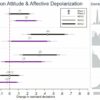The extent to which “civilization” heightens or lessens the likelihood of violent conflict throughout human history has remained one of the most enduring questions among anthropologists. But a new collaborative study of archaeological groups from the Andes region of South America suggests that being part of a centrally organized state society is only part of the equation.
“Our findings suggest that being in a ‘civilization’ may reduce violence, but only for women, and only slightly then,” said Thomas J. Snyder, a doctoral candidate in the Evolutionary Wing of the University of California, Davis, Anthropology Department and lead author of the study. “The effect for women is most pronounced for lethal violence, which can be more plausibly linked to warfare than nonlethal violence.”
The article, “Political organization and gender predict violence in the Andean archaeological record,” was published in the Proceedings of the National Academy of Sciences. The research is a collaboration between UC Davis and the University of Pittsburgh.
Researchers investigated the type and frequency of violence experienced by adults in the pre-Hispanic Andean region in large, centrally organized states (also referred to as “civilizations”), as well as more politically autonomous communities. They looked at existing data on 8,607 adults over a period of 3,000 years from 169 published articles representing 155 sites. The sites were in Peru, Ecuador, Chile and Bolivia.
In autonomous communities, the odds of potentially lethal violent encounters are equivalent between the sexes. In states, they are consistent for males, but decrease for females, researchers found.
While violence can occur in subtle ways, such as unequal access to necessary resources, this study focused on direct, intentional, interpersonal violence, which can occur in wars or battles, or in households. Notably, women may not be shielded from wartime violence, whether by being taken prisoner—or in some cases, fighting defensively in smaller communities, researchers said.
This study has important implications for how future scholars engage with concepts of violence, gender and sociopolitical change, Snyder said.
“An individual’s sex was as important or more important than the kind of society they inhabited in affecting the risk of trauma,” he said. “Gender, rather than just sociopolitical organization, has a critically important impact on the experience of interpersonal conflict.”
The study’s co-author is Elizabeth Arkush of the Anthropology Department, University of Pittsburgh.
More information:
Thomas J. Snyder et al, Political organization and gender predict violence in the Andean archaeological record, Proceedings of the National Academy of Sciences (2024). DOI: 10.1073/pnas.2410078121
Citation:
Was organized society an agitating or pacifying force in ancient Andes populations? (2024, October 22)



